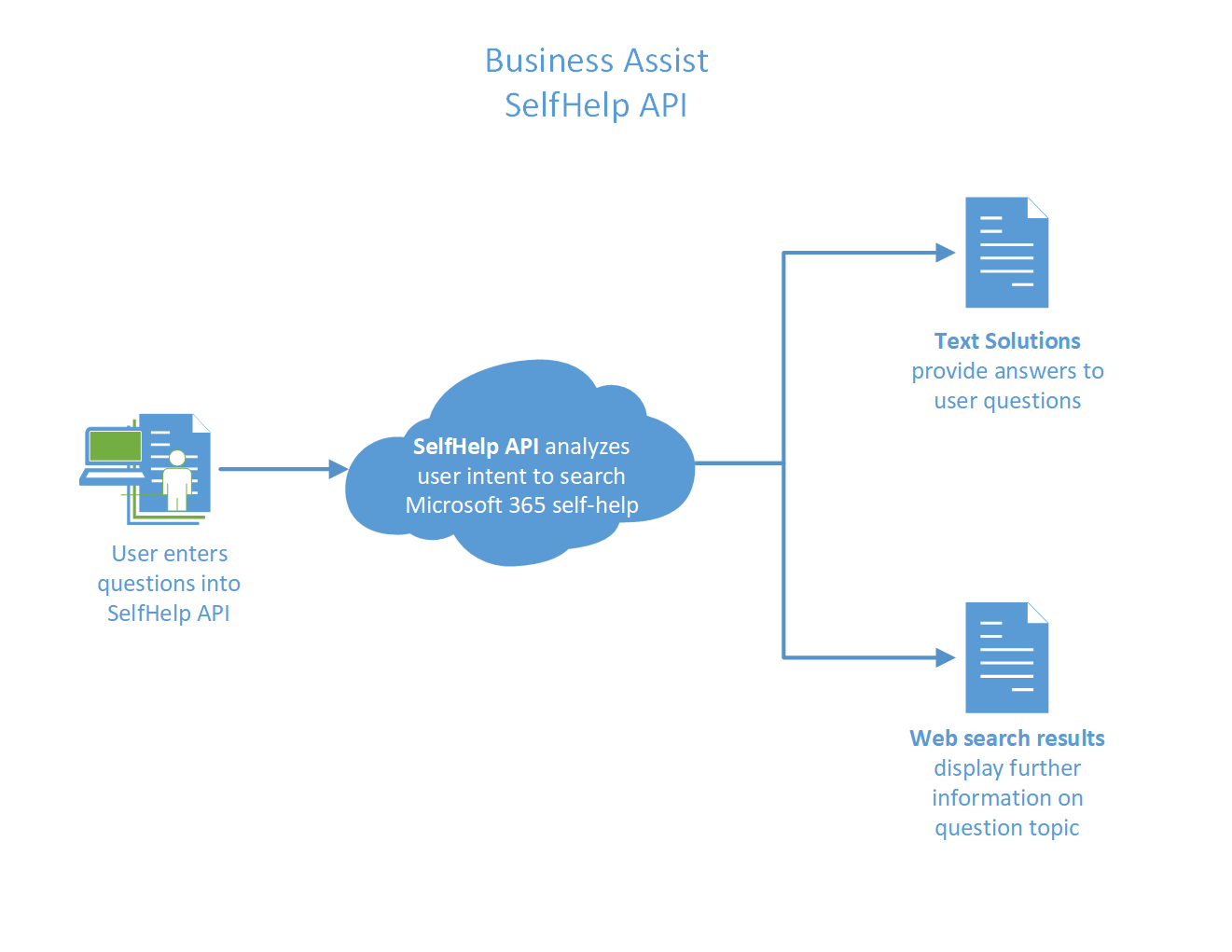Business Assist SelfHelp API
Organizations can improve their customers' experience by helping users solve issues on their own without ever needing to contact support. The Business Assist SelfHelp API helps find self-serve solutions from Microsoft's extensive library of support articles.

What is the SelfHelp API?
The Business SelfHelp API enables you to provide relevant and contextual self-help to your users, using the power of machine learning. The API retrieves targeted solutions from the Microsoft 365 self-help service. SelfHelp combines user intent (how users express their problem) with what we know about users to show the right self-help solution at the right time. It also returns top web search results to increase self help success.
Features of the Business Assist SelfHelp API
- Solutions: Business Assist SelfHelp API uses machine learning algorithms to provide answers to user questions.
- Related Web Search Results: SelfHelp API leverages Bing search to provide related resources for more in-depth content to answer user queries.
- Service Incidents: The ML model helps to detect whether the current query is associated with any ongoing service incidents published on O365 Service Health Dashboard. If any incidents match, it returns the incident information as well.
Use Business Assist SelfHelp API
Use the Business Assist SelfHelp API through the command line interface or build a custom web application to programmatically call the APIs and interpret the results. You can also use iframe to embed our readily available self-help user experience in your support website and leverage Microsoft 365 with minimal development time and effort.
First time user of Business Assist SelfHelp API?
Find resources for getting the most out of the Business Assist SelfHelp APIs:
- Core concepts: Learn how Business Assist SelfHelp works.
- How to use: Learn how to discover solutions with the API.
- API reference: Familiarize yourself with the Business Assist SelfHelp API actions and data types.